Moondrop Echo B
A DSP enabled 4.4mm balanced DAC/Amp for your easy to drive headphones
You can probably think of the Moondrop Echo B as a 4.4mm usb-c dongle DAC version of the excellent Moondrop FreeDSP cable (which along with its sibling the Moondrop Echo A) allows you to transform your headphone Frequency response via PEQ Filters controlled via the Moondrop Link App.
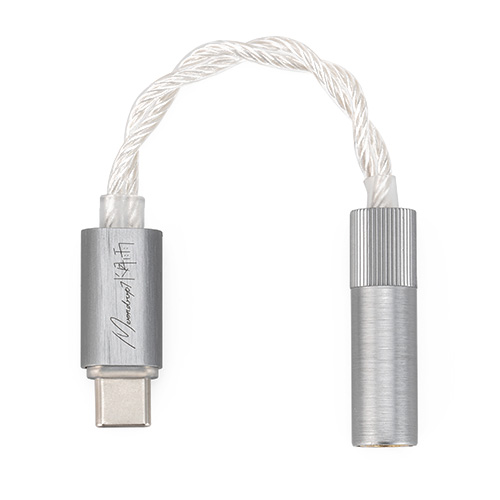
Note: A big thank you to Shenzhenaudio for providing the Moondrop Echo B for this review.
You can check out the product page here.
Having used the Echo B for a few weeks now I feel it is an excellent choice for those looking to add PEQ tuning options to their listening experience especially if they want to standardise on using 4.4mm cable for their IEM or headphone collection. I was slightly let down assuming we would get more power since it has a 4.4mm output but in every other way this is one of the best usb-c DAC amp you can buy in this price range.
But before we get into the details let look at what you get in the package:
Unboxing
The Moondrop Echo B comes in a simple but functional package.
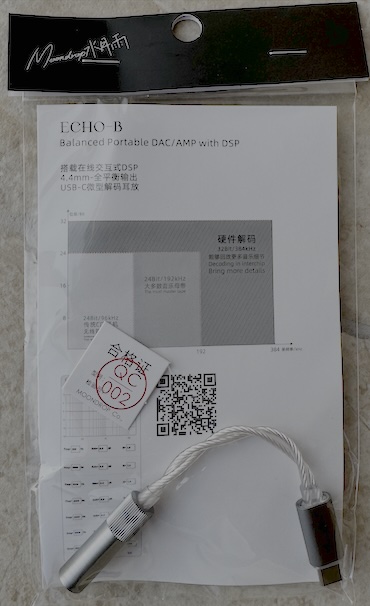
The back of the box has some specifications:
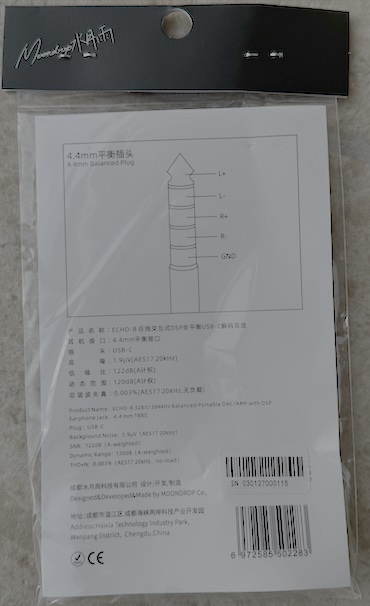
Including:
- ECHO-B DAC/AMP
- Manual
- Certificate
- After-service card
- QR code card for app download
While the packaging is minimal, it gets the job done and reflects the budget-friendly price point.
Design and Build Quality
The Echo B features a sturdy aluminum chassis with a sleek, modern aesthetic. Its 4.4mm TRRS balanced output adds versatility for those using balanced headphones or IEMs. However, its size is notably larger than simpler dongles like the Apple USB-C adapter or the FiiO/Jade Audio JA11:
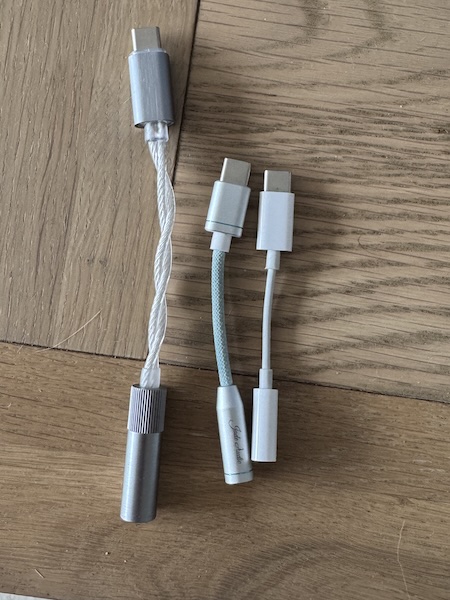
This might be a drawback for users seeking a extremely compact solution but for me it doesn’t matter as these are like extensions of the headphone cable.
The build quality is excellent for the price, and the USB-C connector ensures wide compatibility with Android devices, PCs, Macs, and even newer iOS devices.
Features
The Moondrop Echo B has a few features that make it stand out:
- Interactive PEQ tuning via Moondrop Link Android App offers endless customization options, allowing users to tweak their sound signature.
- THD+N as low as 0.001% and a dynamic range of 120dB, ensuring clear and distortion-free sound.
- 4.4mm fully balanced HiFi output can provide better channel separation and lower noise compared to single-ended outputs.
- 32-bit/384kHz high-resolution hardware decoding ensures excellent audio fidelity.
- Plug-and-play compatibility with no drivers required.
Here is how my Macbook pro see the various hardware decoding options:
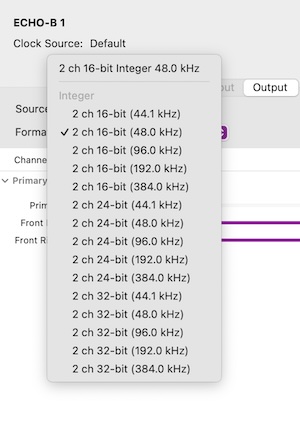
Moondrop Link App and DSP Tuning
The Moondrop companion app allows users to fully customize the sound signature via graphical DSP tuning.
Once you connect your EchoB it appears within the Moondrop Link App home screen:
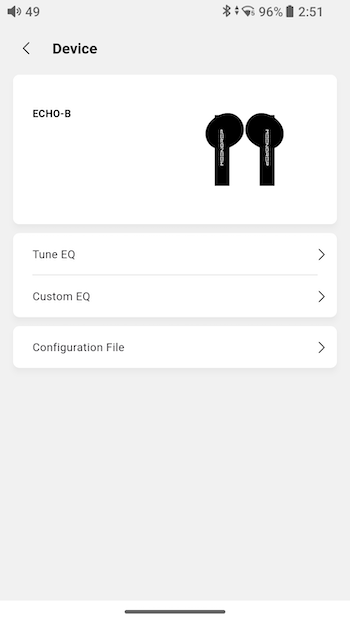
While the app is functional and is getting better it still feels somewhat underdeveloped, e.g. the buttons are tiny on my Android DAP and therefore difficult to configure the filters. An Improved UI and stability could make it a much stronger complement to the Echo B’s hardware.
But for me the main feature is that editing of PEQ filters so let’s have a deeper dive on what you can expect:
PEQ Capabilities
There are a couple of different PEQ options available, including some preset EQ options in the “Tune EQ” section:

And there is the now typical online catalog of PEQ filters you can search which is confusingly
called “Configuration”:
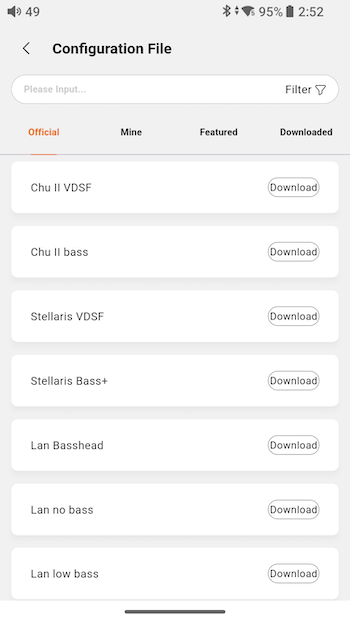
But the “Custom EQ” editing screen is probably the most import allowing you full editing of the 10 PEQ filters:
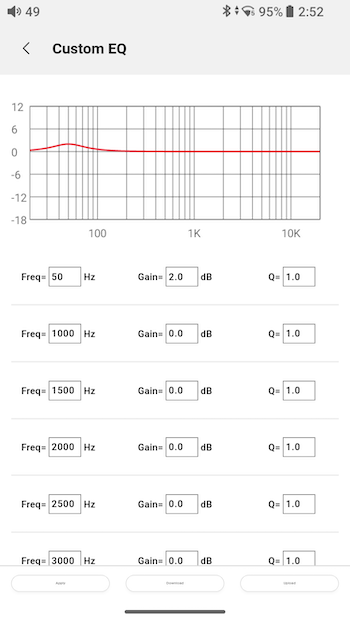
Saving any new EQ Setting will require the App to be given permission to write to the Echo B device:
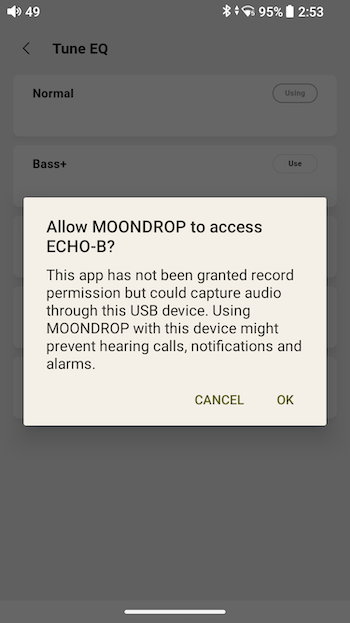
Sound Impressions
The Echo B delivers a clean and neutral sound signature out of the box, with excellent detail retrieval and clarity. Here’s a breakdown of its performance:
Bass
The bass is well-controlled, with excellent extension into the sub-bass region. The balanced output ensures punchy yet tight bass, suitable for genres like electronic, hip-hop, and rock.
Midrange
The midrange is natural and detailed, with clear vocals and instruments. It avoids any harshness or muddiness, providing a balanced presentation across tracks.
Treble
Treble performance is good but not overly emphasized, making it suitable for longer listening sessions. The interactive DSP tuning allows users to enhance treble if needed.
Specifications and Measurements
| Feature | Details |
|---|---|
| Output Jack | 4.4mm TRRS |
| Plug Type | USB-C |
| SNR | 117dB (A-weighted) |
| Dynamic Range | 120dB (A-weighted) |
| THD+N | 0.001% (AES17 20kHz, no-load) |
| Decoding | PCM: 32-bit/384kHz, DSD512 |
| Compatibility | Android, iOS, PC, Mac |
The PEQ tuning capabilities and hardware-level decoding elevate this product beyond simple dongles, making it a versatile addition to any portable audio setup. But it is noticeable there are no publish power rating and this is because you get the same output power as the standard Apple usb-c Dongle (roughly 30mW).
I decided to verify this below comparing this dongle with 2 others, and it shows that the output power is very similar.
Measurements
The Echo B’s published measurements are exceptional for its price:
- THD+N: 0.001% ensures distortion-free playback.
- Dynamic Range: 120dB provides excellent clarity and headroom.
- Noise Floor: <1.5μV, ensuring a black background for sensitive IEMs.
So, I wanted to verify the power output, to do this I decided to do some practical measurements. So I decided to measure one of my hardest to power headphone (The Modhouse Tungsten) using 3 different dongles, the 3.5mm Apple usb-c, the 3.5mm FiiO JA11 (with and without EQ enabled) and the Echo-B.
Here are the results of various different measurements run all at 100% volume:
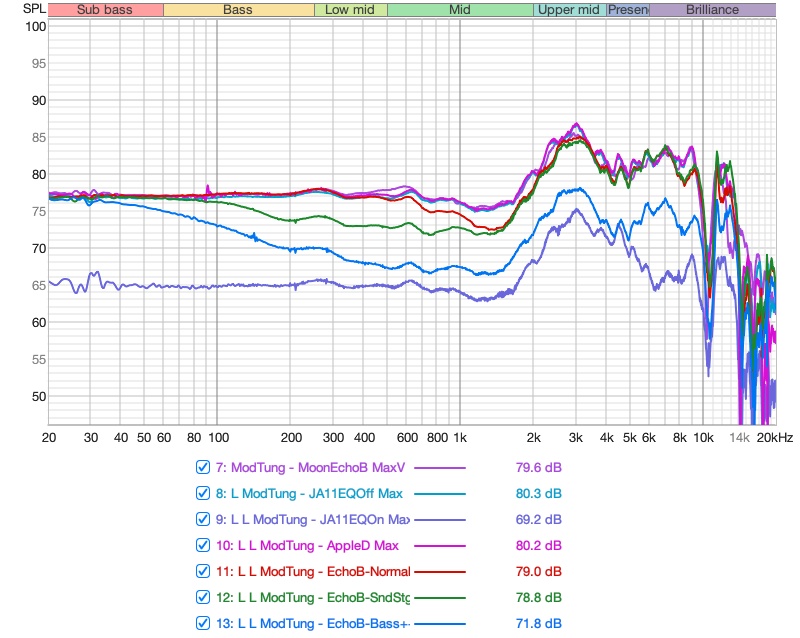
The important ones are 7, 8 and 10 (all 3 dongles at their Max without any EQ).
So not unsurprisingly none of these Dongle is really able to drive the Modhouse Tungsten to any decent lavel, but all 3 dongles gave similar results (I did have to slightly move the Modhouse Tungsten when swapping cables hence why they are not exactly the same frequency response).
The other 4 measurements on this graph as the changes with EQ, so with EQ enabled with the JA11 (Measurement 9 above) you immediately loose 12dB of Gain (though you can manually re-enable it in the FiiO App) but the Moondrop Link App clever calculates the right max gain level based on the EQ filters. I also added some of the preset EQ’s - so you can see the effect of the Normal, Bass++ and Soundstage Presets. So the Moondrop Link App does a better job than the FiiO app in preserving the best gain settings when EQ is enabled.
Distortion
Note: This is really just measuring the distortion from Modhouse Tungsten when using the Echo-B, but it was so low I
thought I would add it to the review:
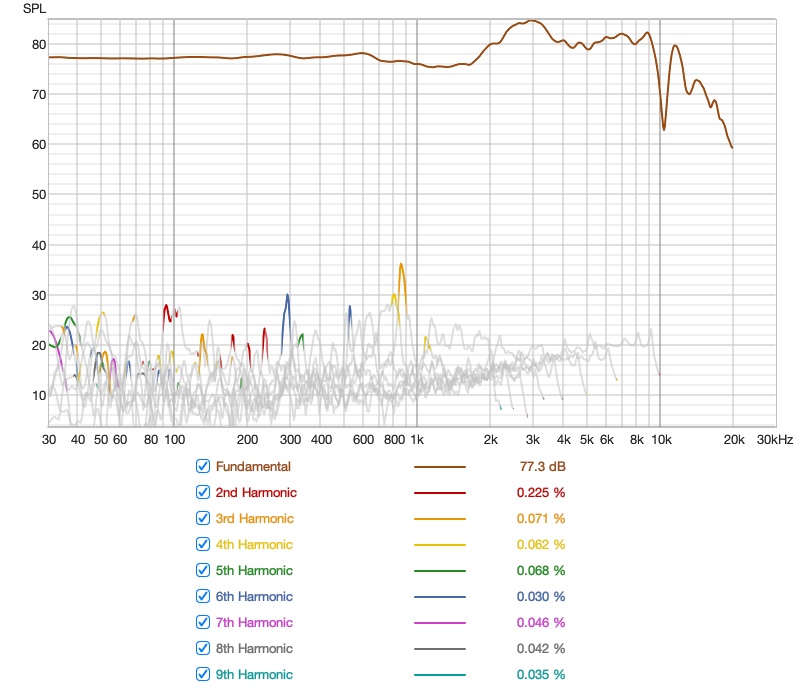 And as a percentage:
And as a percentage:
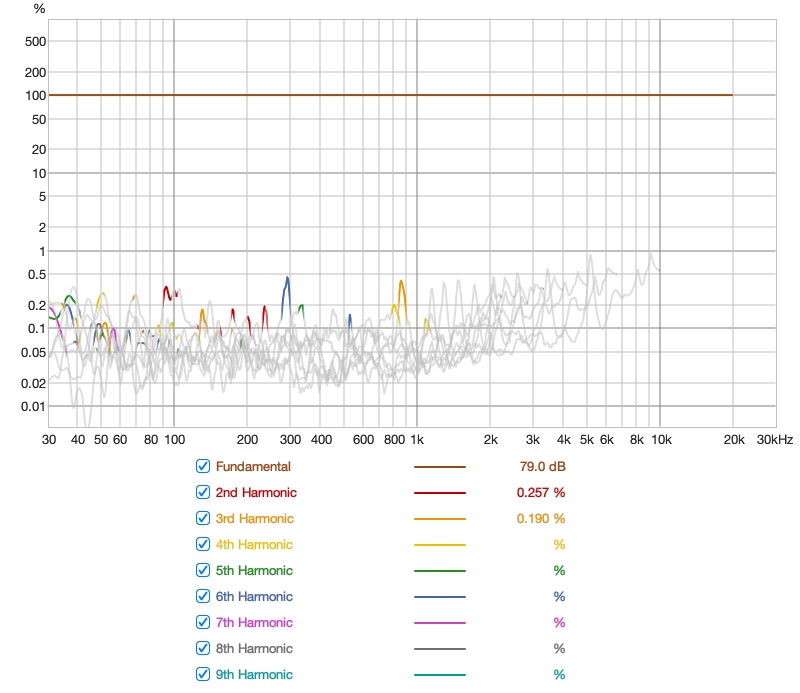
Pros and Cons
Pros:
- Excellent sound quality and measurements.
- Built-in DSP tuning for endless customization.
- Great build quality and design.
- Versatile compatibility across devices.
- Exceptional value at $19.99.
Cons:
- Power output could be higher for a balanced 4.4mm DAC/AMP.
- Companion app still needs improvement.
- Larger size compared to simpler dongles.
Rating
I have given the Echo B a very pragmatic 4-stars, it is exceptional to see a 4.mm usb-c adapter with full PEQ capabilties, but most people would expact a 4.4mm balanced output you get more power than a 3.5mm single ended output and in the case of the Echo-B it does not have more power, so for me, it is perfect for IEM’s and easier to drive headphones but will struggle with many higher end headphones, especially the ones that you might want a power boost and are currently using with a 4.4mm connection.
Conclusion
The Moondrop Echo B is a fantastic value for users looking for an affordable DAC/AMP with PEQ tuning and balanced output. Its clean sound, excellent measurements, and versatility make it a great choice for most IEMs and portable headphones. However, users with more demanding headphones may find the power output lacking. Despite minor drawbacks, the Echo B offers an exceptional listening experience at a very pragmatic price.